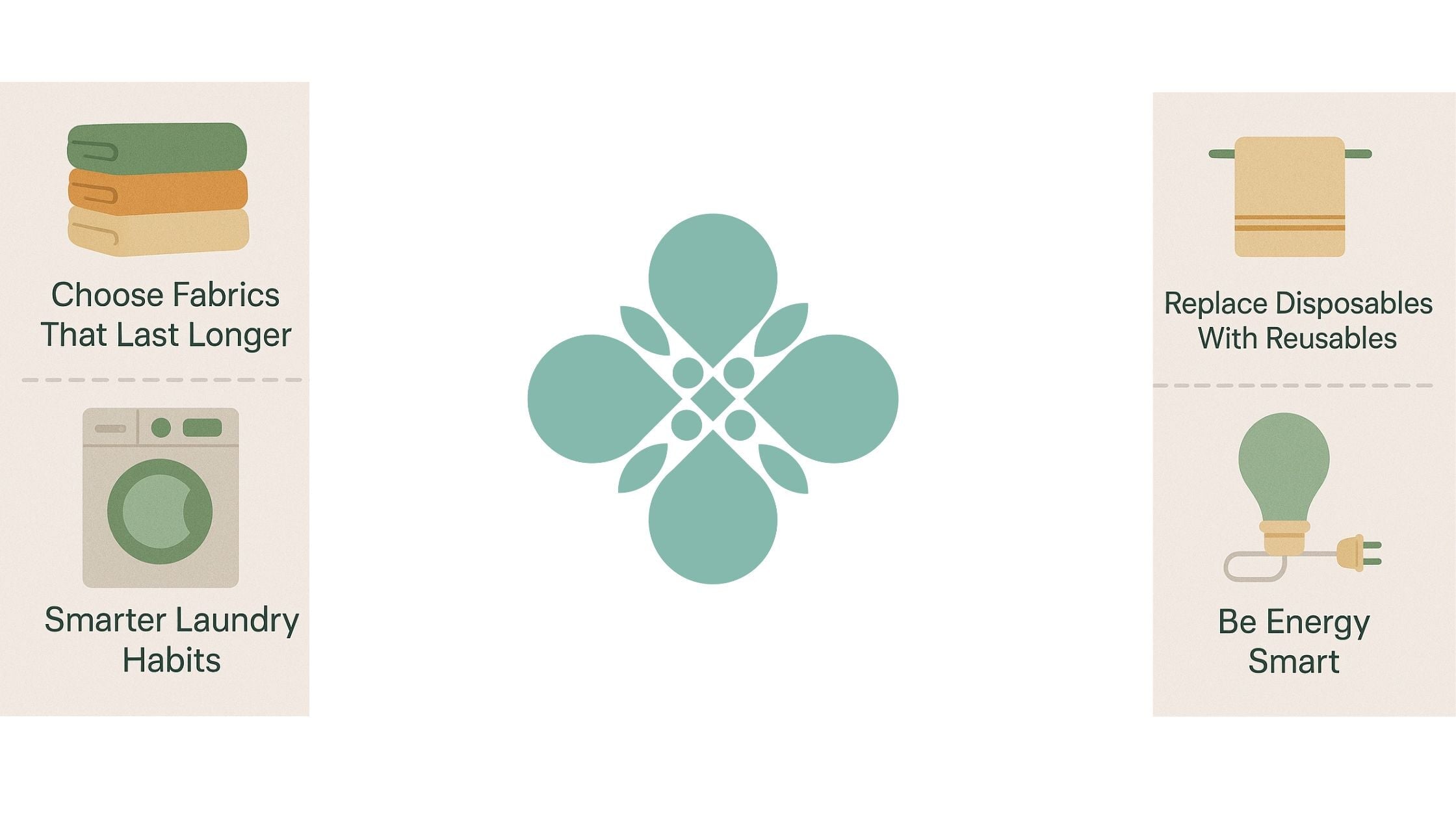We all want to do our part for the planet — but when you’re juggling kids, laundry, meals, and everything in between, “eco-friendly living” can feel like one more thing on your to-do list (and an expensive one, too). The good news? Going green doesn’t have to mean blowing your budget. In fact, many eco-friendly swaps save money in the long run.
Here are some simple, affordable ways to create a more sustainable home for your family — without spending a fortune.
1. Choose Fabrics That Last Longer
Every mom knows how quickly cheap towels or sheets can fall apart after a few washes. Instead of replacing household textiles every year, look for natural, durable fabrics like Turkish cotton, linen, or bamboo. These fibers:
-
Last longer and get softer with every wash
-
Don’t shed harmful microplastics like polyester does
-
Feel better against your skin and are safer for kids
Even if the upfront price is a little higher, you’ll end up saving money because you won’t need to replace them as often.
2. Replace Disposables With Reusables
Think about how many paper towels, sandwich bags, or water bottles your family goes through each week. It adds up — both in cost and in waste. A few smart swaps can make a huge difference:
-
Cloth napkins or hand towels instead of paper towels
-
Reusable grocery bags instead of plastic bags at checkout
-
Refillable water bottles + a home water filter instead of bottled water
Each swap reduces daily waste and saves you money month after month.
3. Smarter Laundry Habits
Laundry is one of the biggest chores in a busy household — and it’s also one of the easiest places to cut waste. A few changes can lower your bills and help the planet:
-
Wash in cold water: Most of the energy in a wash cycle goes into heating water. Cold cycles clean just as well for everyday loads.
-
Skip the fabric softener: It actually coats fabrics and makes towels less absorbent. Vinegar is a natural alternative.
-
Air-dry when possible: Even drying just a few loads outside or on a rack each week saves energy and keeps clothes looking new longer.
4. Buy Less, But Better
It’s tempting to grab cheaper versions of household goods — but fast textiles and throwaway items don’t last. Instead, think quality over quantity:
-
One sturdy, well-made blanket > three flimsy ones that fall apart
-
A set of durable towels > a closet full of ones that don’t absorb
-
Classic, neutral pieces that you’ll love for years
When you buy less and choose better, you save money and reduce clutter.
5. Try Easy DIY Swaps
Eco-friendly doesn’t mean complicated. Some of the best solutions are already in your pantry:
-
Vinegar + water makes a great all-purpose cleaner
-
Baking soda can freshen laundry, carpets, and drains
-
Old jars and tins can be repurposed into storage containers
These simple swaps cut down on packaging waste and save you from constantly buying new cleaning products.
6. Be Energy Smart
Even small changes in your daily routines can reduce your utility bills:
-
Switch to LED light bulbs (they last years and use less energy).
-
Unplug chargers and small appliances when not in use.
-
Run your dishwasher and washing machine only when full.
These changes may seem minor, but together they add up to noticeable savings.
Final Thoughts
Living more eco-friendly doesn’t mean living perfectly, and it certainly doesn’t mean spending a fortune. By making a few intentional swaps — choosing long-lasting fabrics, cutting disposables, adjusting laundry habits, and being energy smart — you can create a home that’s better for your family and for the planet.
It’s about progress, not perfection. And the best part? Most of these eco-friendly choices save you money while making your home feel healthier, simpler, and more peaceful.


Share:
The Ultimate Towel Guide for Busy Moms: Turkish Cotton vs Linen vs Microfiber
Polyester Robe vs Cotton